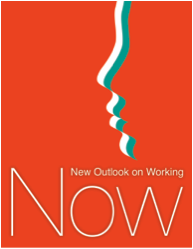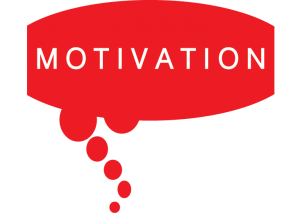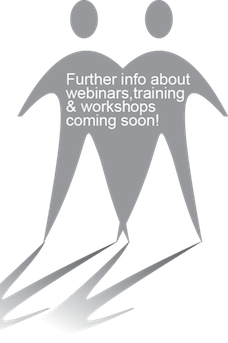New Outlook on Working (N.O.W.)
A Brief Cognitive Motivational Program for Individuals on Social Assistance
 N.O.W. : New Outlook On Working is a group-based intervention that adopts a radically different approach in dealing with individuals on social assistance. Rather than focusing intervention on simply offering support and encouragement and/or on teaching basic skills for living, both of which are important in some way, the N.O.W. program hones in on what we regard as much more central in importance … personal commitment to change and the ‘insight’ that is required for these individuals to move their lives in some new direction. In motivational practice, this is summarized as helping individuals become “willing, able & ready” to tackle some core issue in their lives. Commitment to change is a prerequisite for the effort required to realize it. And commitment to change arises, fundamentally, out of an understanding of the need to change, ones capacity to begin effecting this change (i.e., self-efficacy expectations), and the importance one attaches for this change to begin NOW! Within this motivational framework, N.O.W. is designed to assist men and women in evaluating and committing to goals for self-sufficient living, understand their own roadblock (self-sabotaging thinking), learn some essential problem-solving and coping skills, and impart a necessary level of intrinsic motivation to seek and retain employment and/or training to improve their lives.
N.O.W. : New Outlook On Working is a group-based intervention that adopts a radically different approach in dealing with individuals on social assistance. Rather than focusing intervention on simply offering support and encouragement and/or on teaching basic skills for living, both of which are important in some way, the N.O.W. program hones in on what we regard as much more central in importance … personal commitment to change and the ‘insight’ that is required for these individuals to move their lives in some new direction. In motivational practice, this is summarized as helping individuals become “willing, able & ready” to tackle some core issue in their lives. Commitment to change is a prerequisite for the effort required to realize it. And commitment to change arises, fundamentally, out of an understanding of the need to change, ones capacity to begin effecting this change (i.e., self-efficacy expectations), and the importance one attaches for this change to begin NOW! Within this motivational framework, N.O.W. is designed to assist men and women in evaluating and committing to goals for self-sufficient living, understand their own roadblock (self-sabotaging thinking), learn some essential problem-solving and coping skills, and impart a necessary level of intrinsic motivation to seek and retain employment and/or training to improve their lives.
Individuals on long-term social assistance may be despondent or demanding, compliant or dismissive, angry or depressed, but regardless of how they may be reacting emotionally to their life circumstances, few would see any real, practical, achievable way to a different future. The N.O.W. program was designed as a structured and sequenced methodology for employment and social service practitioners to follow in helping their clients appreciate their personal role in achieving and committing to working to realize his different future … one that obviously would include finding/retaining employment or seeking educational or vocational upgrading.
Working in a motivationally interactive fashion, the aim in the N.O.W. process is to move fluidly from:
- Encouraging clients to reflect on their lives, including the reasons why obstacles may not have been well managed in the past and opportunities may have been missed; to
- Helping them notice relationships with their own (self-sabotaging) thinking that they may not have been sensitive to in the past,
- Helping them begin to refine their vague ‘wishes’ for their lives into SMART goals, and finally,
- Setting out an action plan with strategies they can commit to, and learning some effective problem-solving tools for achieving some form of life success … self-sufficient living without reliance on social assistance.
The structure of the N.O.W. program, as 12 full-day intensive sessions of delivery, interspersed with some one-to-one work with the facilitator, was intended to serve two aims:
- Provide clients with the time necessary to explore their lives fully and reflect on key issues of change and what this entails;
- Begin to solidify the self-discipline and self-organization required for regular daily attendance within a work environment.
Clients are kept very actively involved throughout the program and there is very limited ‘didactic’ teaching of concepts by the facilitator. The focus is on small group exercises the clients complete, guided discussion of issues that arise from these exercises, and self-reflective analysis completed in the client’s “Personal Agenda”, a detailed workbook that guides clients throughout the program.
In its overall design, the program should be followed immediately by a job trial, and there are two further sessions delivered in this context … one before the job trial (or actual employment if this should be possible) titled “Preparing For Work”, and another after some period of actual work experience has occurred tiled “Feedback from Work: Examining the Results”.
Throughout the program, ambivalence about employment is attended to motivationally (e.g., clarifying the congruence with ones personal values and the benefits and costs one sees personally for employment vs. unemployment). Exploring other positive approach goals the individual might aspire to is supported in order to add to conviction. Asking clients to specifically take account of those strategies that may not have worked for them in the past adds to self-efficacy. And arriving at a coherent picture of how their goals for seeking employment might fit within a broader life plan should help reduce distress, anxiety or fear about implementation.
The Program Manual for N.O.W. explains the rationale and aims for each session clearly in an introductory ‘Note for Facilitators’. Each Session builds on the previous and the program works gradually towards encouraging serious, in-depth reflection about ‘change’ towards an ‘employment’ future in ones personal life.
Overview of Program Content:
Applying a strategy of getting clients to move ‘backward’ and ‘forward’ in some structured self-reflection on their lives, the initial intent of the program is to have them contrast what they have ‘had’ or ‘attained’ in their lives versus what they would ‘like’ or ‘aspire to’. It is suggested to them, along the way, that some of what they would like, at least in realistic terms, may have been blocked by their own ways of thinking (i.e., attitude blocks and self-sabotaging thinking) and their particular ways of dealing with problems (i.e., more reactively than pro-actively). The focus used in this respect is not to ‘teach’ the clients what they have done wrong but to encourage them to conduct some analysis of their own behaviour patterns.
This approach is carried forward in having clients ask themselves and assess what they most value (i.e., needs and wants), what might influence these judgments of what they value, and whether they believe they have always behaved consistently in ways to satisfy their most important needs, while still pursuing their wants. The focus to this point is to create some dissonance, encouraging clients subtly to begin seeing ‘unemployment’ as incompatible with achievement of their own ‘wishes and dreams’. Program facilitators are expected to remain motivationally alert as the process unfolds so as to assess some key aspects of resistance for individual clients:
- Problem ‘un-awareness’ … how much of it there may be and with relevance to what issues;
- What exploration of conflict in needs or values, or what compelling rationale of self-interest, might help create more urgency about change;
- What enhancement of personal ‘capacities’ and what changes in immediate circumstances might be key to employability (both in the immediate and medium to longer-term);
The program then unfolds towards having clients more precisely define the goals they would like to pursue. A visual, goal- plotting exercise allows clients to begin conceptualizing relationships between goals rather than simply listing or ranking them. This is solidified in a one-to-one session where facilitators work collaboratively with the clients to involve them in redefining and re-framing goals, and re-sorting as necessary (i.e., so as to more directly impinge on employability). In a following session, assessment and re-assessment of actions or strategies to pursue goals is encouraged to ensure there is both commitment and achievability. Then as an important self-assessment of their level of ‘readiness’ for the effort required, a decisional-balance strives to have clients examine their most compelling reasons ‘for and against’ continued unemployment vs. employment. Some key problem-solving skills are taught in a condensed fashion (two sessions) and a ‘Personal Change Plan’ is developed before the programme is brought to a close with teaching two further skills for dealing with the work context … dealing with pressure and managing emotions.

